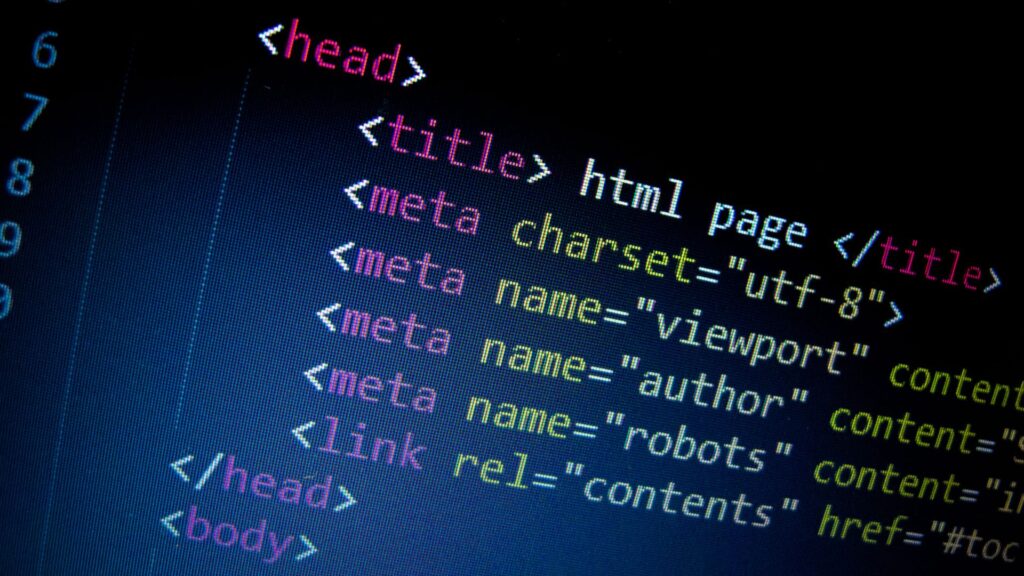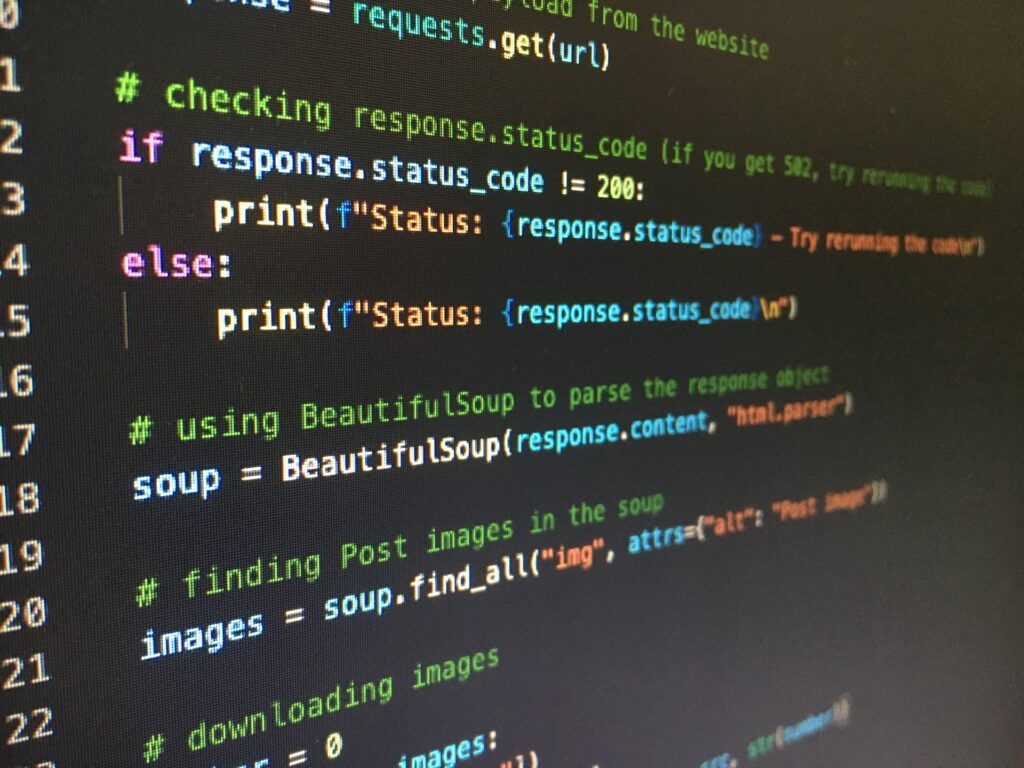HTML, or HyperText Markup Language, is one of the most fundamental technologies of the web. It structures websites and organizes content for display on a web browser.
However, a common debate often arises: is HTML a programming language like any other? In this article, we’ll answer this question by analyzing HTML’s purpose, how it differs from programming languages, and its crucial role in web development.
Read as well: Why preserving prototypes of video games is important
What is HTML?
HTML stands for HyperText Markup Language, a language used for marking up – or structuring – content on the web. HTML provides the backbone of web pages by organizing content and defining elements like headings, paragraphs, images, and links.

Despite HTML’s importance, many argue about whether it qualifies as a programming language. But before we delve into why HTML may or may not be a programming language, let’s look at its basics.
How HTML works
HTML uses “tags” enclosed in angle brackets to define elements on a webpage. These tags instruct the browser on how to display specific content. For instance:
- <h1>: Defines a main heading.
- <p>: Defines a paragraph.
- <img>: Embeds an image.
- <a>: Creates a hyperlink.
Each of these tags is essential for building the visible structure of a webpage, from headlines to images, and links that enable navigation. An HTML page starts with a <!DOCTYPE html> declaration to inform the browser that this is an HTML5 document, and it usually includes <html>, <head>, and <body> sections to organize its structure. The head section might include metadata or link stylesheets, while the body section contains the visible content.
For instance:
<!DOCTYPE html>
<html>
<head>
<title>My First HTML Page</title>
</head>
<body>
<h1>Welcome to my website!</h1>
<p>This is an example of a paragraph.</p>
<img src="my_image.jpg" alt="A beautiful image">
</body>
</html>
The example above provides a simple page structure – but what does that mean?
So, is HTML a programming language? Well…
The short answer is no – HTML is not classified as a programming language. Instead, it’s a markup language that structures content.
To understand why, we should define what a programming language is. Typically, programming languages, such as Python, JavaScript, and C++, are designed to instruct computers to perform specific tasks. Programming languages require:
- Logic and Control Flow: The ability to perform actions like loops, conditionals, and calculations.
- Interactivity: Programs respond to user input or other events.
- Complex Functionality: Programs perform tasks that involve data manipulation, problem-solving, and decision-making.
In contrast, HTML lacks these qualities. HTML does not possess logic or the capability to control flow, nor does it allow for data manipulation. HTML simply structures content on the web. In other words, HTML provides the skeleton of a webpage, but it doesn’t “do” anything in the way programming languages do.

Why HTML is not a programming language
- No control flow or logic: HTML lacks if-else conditions, loops, or any other mechanism to create logical structures. Programming languages require these to execute complex tasks and make decisions. HTML simply organizes and presents information without logical structure.
- Lack of interactivity: HTML alone doesn’t respond to user input or generate dynamic content. To add interactivity, we need a scripting language like JavaScript.
- No data manipulation: HTML cannot store or manipulate data in the way programming languages can. HTML defines structure but not function.
These three limitations make HTML inherently different from programming languages. A good analogy would be to consider HTML as a blueprint. It defines the layout but not the functions.
Key differences between HTML and other programming languages
To further clarify why HTML is not a programming language, let’s examine how it compares to programming languages like JavaScript.
- Purpose and functionality: HTML structures web pages, while programming languages allow complex functionality. JavaScript, for instance, enables web pages to become interactive by responding to user events (clicks, mouse movements) and managing data.
- Syntax and logic: Programming languages like Python or C++ follow strict syntax and use logical operators, control structures, and functions to perform calculations or manipulate data. HTML lacks these logical operators and cannot execute operations.
- Role in web development: HTML, CSS, and JavaScript each play unique roles in web development. HTML structures content, CSS styles it – and JavaScript adds functionality. None of these functions overlap, highlighting HTML’s unique role as a markup language rather than a programming tool.
HTML vs. JavaScript: a complementary relationship
While HTML structures web pages, JavaScript adds dynamic functionality. The two languages are complementary. HTML builds the foundation, and JavaScript brings interactivity. For instance, HTML can create buttons and forms, but JavaScript enables them to respond when clicked or when data is entered.
For example, a simple webpage might include JavaScript to validate a form:
<!DOCTYPE html>
<html>
<head>
<title>Form Example</title>
</head>
<body>
<form onsubmit="return validateForm()">
<label for="name">Name:</label>
<input type="text" id="name" name="name">
<input type="submit" value="Submit">
</form>
<script>
function validateForm() {
var name = document.getElementById("name").value;
if (name == "") {
alert("Name must be filled out");
return false;
}
return true;
}
</script>
</body>
</html>
Here, HTML defines the form structure, while JavaScript handles form validation. This interaction demonstrates that HTML and JavaScript serve different but interconnected purposes.
The importance of HTML in web development
Even if HTML is not a programming language, its importance in web development is undeniable. HTML provides the essential structure and accessibility for websites, laying the foundation on which all other technologies build.

1. Foundation of web content
HTML organizes content in a clear, accessible manner. Every website starts with HTML, ensuring that content is presented logically and is navigable.
2. Supports accessibility
HTML’s semantic tags (like <header>, <footer>, <article>) make websites more accessible to people with disabilities. Screen readers rely on HTML tags to interpret and convey content to visually impaired users.
3. SEO and web indexing
Search engines analyze HTML to understand the structure and relevance of web content, using HTML tags for indexing. Clear HTML helps search engines rank content appropriately.
4. Base for CSS and JavaScript
HTML serves as the base upon which CSS and JavaScript act. CSS adds style and formatting, while JavaScript adds functionality, making HTML essential for creating dynamic, modern web experiences.
Common misconceptions about HTML
Some believe HTML is a programming language due to its technical nature and crucial role in web development. But unlike programming languages, HTML cannot create algorithms, execute commands, or perform calculations. HTML’s focus remains on content structure.
Misconception 1: HTML is Used for Programming Websites
While HTML is used in website creation, it doesn’t “program” anything in the sense that JavaScript or Python do. HTML defines what appears on a page, but it doesn’t control actions or responses.
Misconception 2: HTML “Does” Things
HTML itself is static and cannot “do” anything without JavaScript or other programming languages. While it creates the framework, it’s JavaScript that introduces dynamic behaviors.
So – is HTML a programming language? Not really.
We can confidently say that HTML is not considered a programming language. Rather, HTML is a markup language that forms the foundation of website structure. While it’s essential to web development, HTML lacks the logic, control flow, and data manipulation that define programming languages.
Instead of thinking of HTML as a programming tool, it’s best to understand it as the building block of web content – a necessary framework that holds a webpage together.
Ready to stay ahead of the curve in the ever-evolving world of web development? Main Leaf’s blog is your go-to resource for the latest insights, practical tips, and in-depth tutorials. Don’t miss out on the opportunity to elevate your skills and stay informed. Visit our blog today and unlock your full potential as a developer – or get professional help to bring your dream game into reality.

